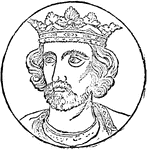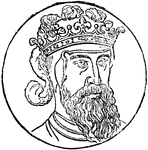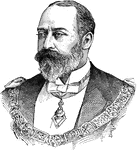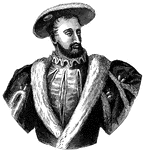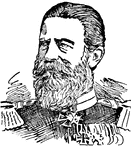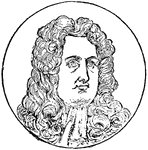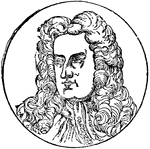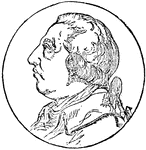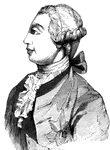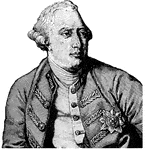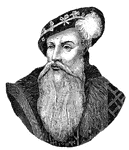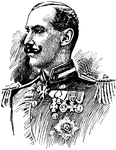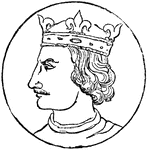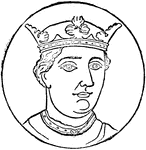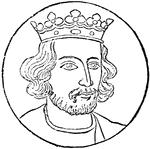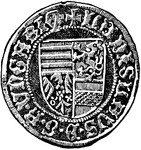
Ducat of Ladislaus Postumus, Reverse
The reverse side of a ducat, a gold coin, of Ladislaus Postumus, the King of Hungary from A.D. 1452-1457.
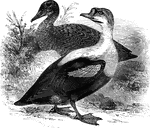
King Duck
Found in the Arctic regions of Europe, Asia, and North America, the king duck strongly resembles the…
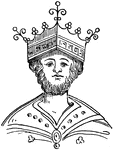
King Edgar
Edgar I (c. 943 – 975), known as Edgar the Peaceful or the Peaceable, was King of England from 959…
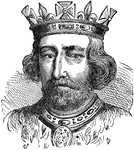
Edward II of England
Edward II, (April 25, 1284 – September 21, 1327) of Caernarfon, was King of England from 1307…
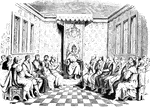
Edward VI
"Edward VI, and his Council. From a wood-cut on the title-page of 'Acts of Parliament," A.D. 1551."…

Edward VI. Writing His Journal
Edward VI became King of England and Ireland on January 28, 1547, at just nine years of age. Edward,…
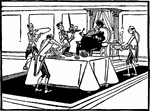
They Enlarged The King
Mark Twain illustrating an Italian newspaper as saying that the Italian sovereigns are coming back-they…
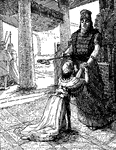
Esther Approaches King Xerxes
"Now it came to pass on the third day, that Esther put on her royal apparel, and stood in the inner…

Esther Approaches the King and is Welcomed
"Now it came to pass on the third day, that Esther put on her royal apparel, and stood in the inner…

Esther Hosts a Banquet for King Xerxes and Haman
"So the king and Haman came to banquet with Esther the queen." Esther 7:1 ASV King Xerxes and Esther…

Execution of King Charles
When Charles was beheaded on January 30, 1649, Phillip Henry records that a moan was heard from the…
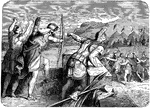
Astor to Philip's Right Eye
"It was during the siege of Methone that Philip had the misfortune to lose on of his eyes. A random…
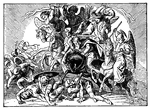
Five Angelic Warriors Fight for the Maccabees
Illustration of the Maccabee warriors fighting alongside angelic warriors in a swirl of battle. The…
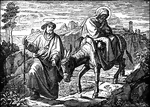
Joseph Leads Mary and Jesus on the Road to Egypt as They Flee from King Herod
"...behold, the angel of the Lord appeareth to Joseph in a dream, saying, Arise, and take the young…
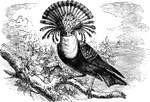
King Flycatcher
An impressive South American species of fly-catcher, with a transverse crest of reddish-fawn feathers.
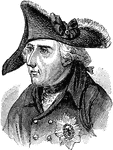
Frederick II of Prussia
Frederick II (January 24, 1712 – August 17, 1786) was a King of Prussia (1740–1786) from…
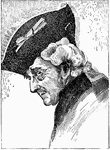
Frederick the Great
Also known as Frederick II of Prussia. He reigned from 1740 to 1786 and was a proponent of enlightened…

George I, King of England
The King of Great Britain and Ireland from August 1, 1714 until he died on June 11, 1727.

George I, King of Greece
George I (born Prince William of Schleswig-Holstein-Sonderburg-Glücksburg; 24 December 1845 – 18…
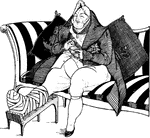
George IV
George IV or George Augustus Frederick (12 August 1762 – 26 June 1830) was king of the United…
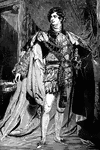
George the Fourth in the Robes of the Gartep
This painting by Sir Thomas Lawrence. It is one of his many famous portraits. It can now be found in…

The Gold Alfred Jewel, Front View
A close-up, front view of the gold Alfred Jewel, which was made in the late 9th century. The inscription…
The Gold Alfred Jewel, Side View
A close-up, side view of the gold Alfred Jewel, which was made in the late 9th century. The inscription…
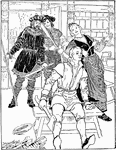
Gustavus Vasa
Gustavus Vasa hiding out with peasants in the story about the king from "The Red True Story Book" by…
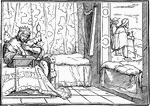
The Happiness of the Godly
The Happiness of the Godly, from Hans Holbein's series of engravings known as his Bible Cuts.
Henry III of England
Henry III (1207 – 11272), also known as Henry of Winchester, was King of England, Lord of Ireland…
